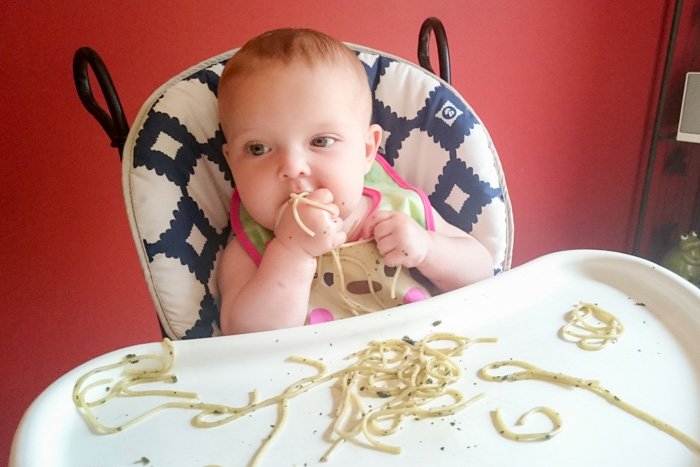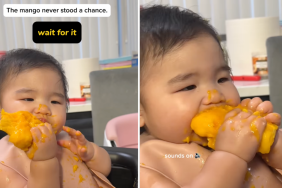
Like a lot of new moms, I knew that when my daughter hit four months I was going to need to make a decision on how I was going to start solid foods. My pediatrician encouraged me to start her on purees, but I was still going back and forth on whether or not I wanted to do baby-led weaning and I knew if I wanted to go that route, I’d have to start researching.
As I joined Facebook groups dedicated to information and recipes, I started feeling better about the whole thing, and when my daughter hit six months, we decided to dive into it. She’s now two and a half and it was the best decision I could have made. There are so many positives, but I want to be clear that it’s not for everyone, and that’s OK. Here are 7 reasons you should consider doing baby-led weaning instead of traditional purees with your infant.
1. The allergy thing
Research seems to be constantly changing in this, but the consensus right now seems to be that you should start introducing them early—but not too early. And I could go on, but I’ll leave it at this: early exposure to common allergens, including peanuts, shellfish, and eggs, seems to be beneficial in preventing kids developing allergies to these foods. However, a baby’s gut may not be able to handle solid foods if their system isn’t fully matured, so according to the American Academy of Pediatrics, it’s best to wait to start solids in any form until a baby is at least six months.
2. It’s cheap
You don’t have to buy pureed baby food because your baby eats what you eat, or at least the same foods you would eat. Starting out, you may choose to go slow and start with avocados, eggs, or big strips of meat and gradually build from there. The reason being, if there is a reaction to something, you will be able to pinpoint it better. However, there are parents who start giving the same meals they’re eating to the baby right off the bat: spaghetti and meatballs, tacos, chili, you name it.
3. It’s so much easier
Making your own purees is cost-effective, but it takes time. With baby-led weaning, there’s no extra preparation. As long as foods are cut big so they can be held in your baby’s fist and gnawed on, you’re good. Things like beans and corn can be cut in half to start with until your baby learns to maneuver food better.
4. Early practice in chewing foods
Pureed foods are easily swallowed, but with going right to solid foods, your baby learns right away how to use their tongue to move food around their mouths and how to deliberately swallow. My daughter started out gagging quite a bit (more about that below) but quickly became proficient in managing food in her mouth and now does great.
5. There is exposure to a wide variety of flavors
If your baby was breastfed, they have already tried a lot of different flavors, since what you eat ends up in your breast milk. Serving them regular foods with seasonings, lets them sample different tastes and realize food is actually quite diverse.
6. They get to participate in family meals
I was never enthusiastic about having to feed my baby separately or have to continuously spoon them food while I was eating my burger. Call me selfish, but I loved the idea of her eating her meal right with us, squishing scrambled eggs or chasing black beans. She loved being independent and right around her first birthday, she was using a fork like a champ and scooping her chili with a spoon right along with us. Plus, it taught her socialization skills.
7. It could help them be less picky eaters
Because of the variety of foods they get exposed to and can explore, you may find your child ends up being less picky as a toddler. While my daughter still picks and chooses what she eats, she does still like a wide range of foods. Was it related to baby-led weaning? Who knows, but it certainly didn’t hurt her.
So when should you start baby-led weaning? The main rules are that babies need to be at least six months old and be able to hold themselves upright. Their tongue thrust reflex needs to have disappeared. This is all to prevent choking from babies who aren’t developmentally ready to start. formula and/or breast milk needs to still be their main source of nutrition until they reach a year. There is a saying “Food before one is just for fun.” Make sure to do your research, join Facebook groups on this, and read the book on baby-led weaning, if you can. Most importantly, learn the difference between gagging and choking. And remember, it’s not for every family. But there are so many great things about it, so it’s worth at least considering.








